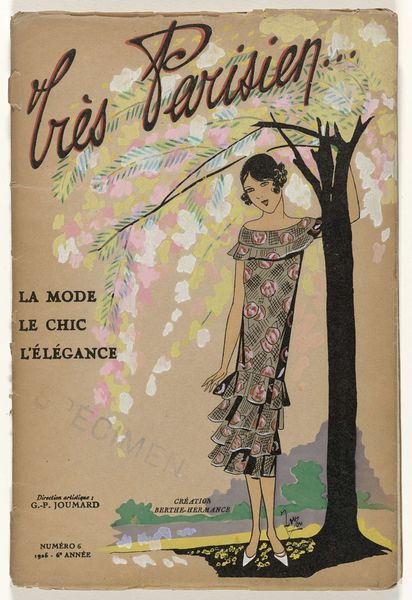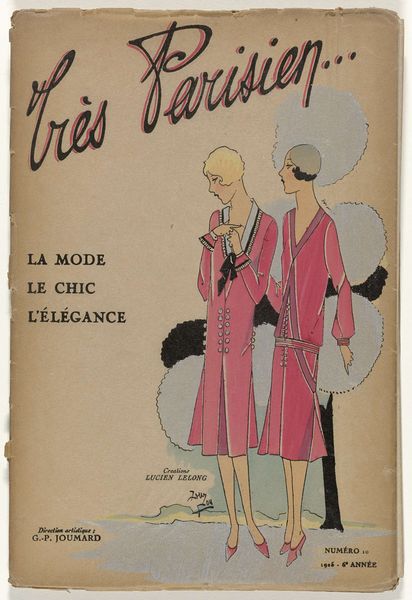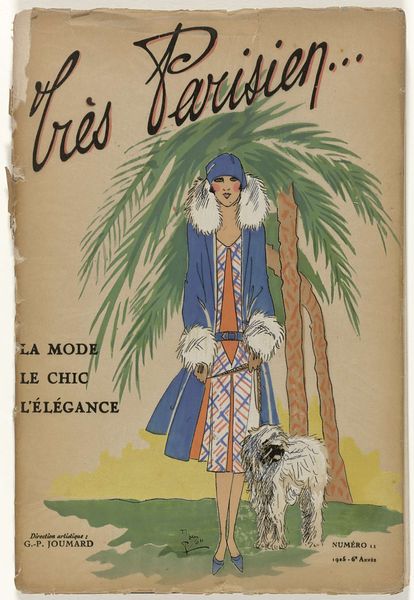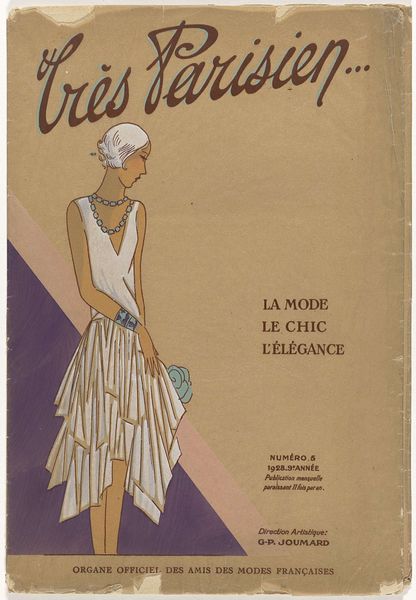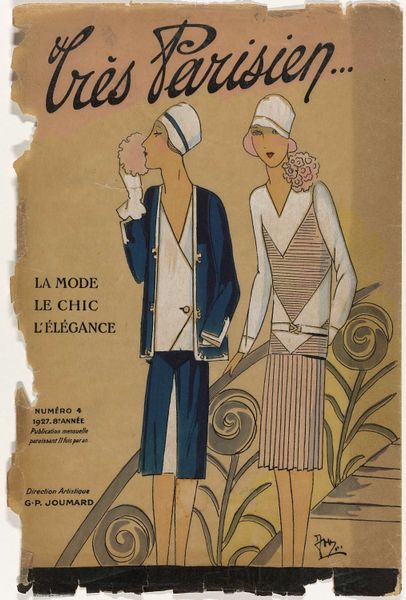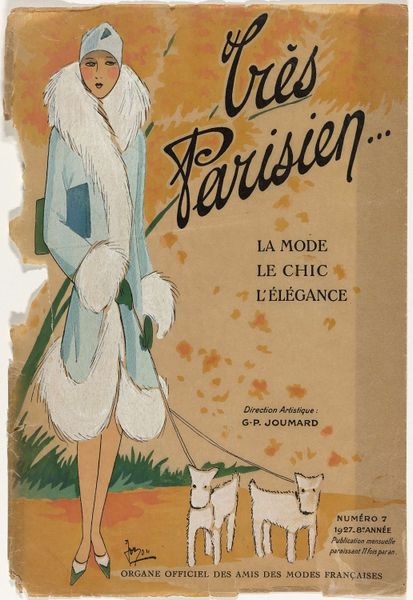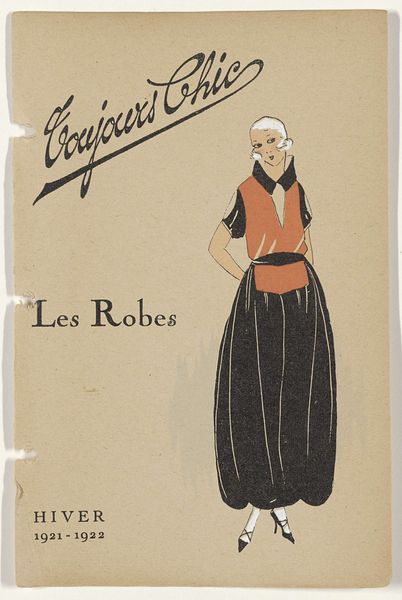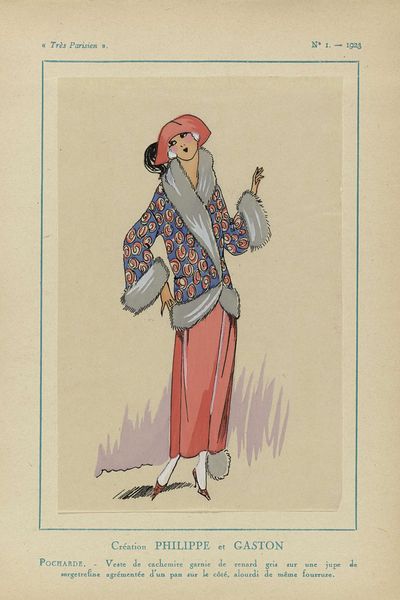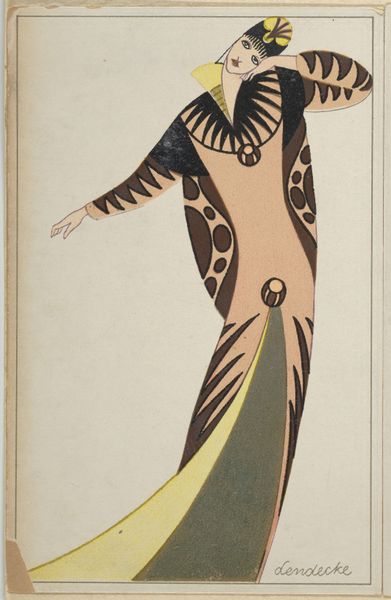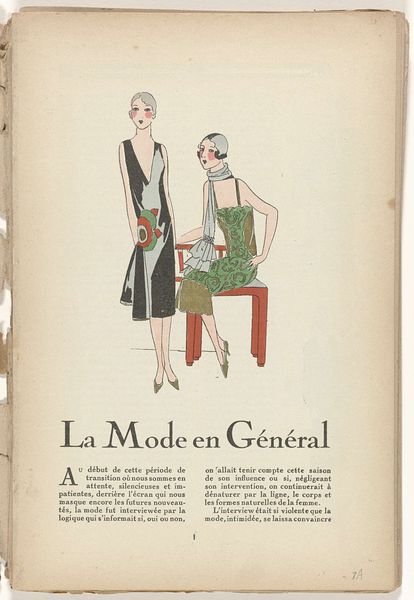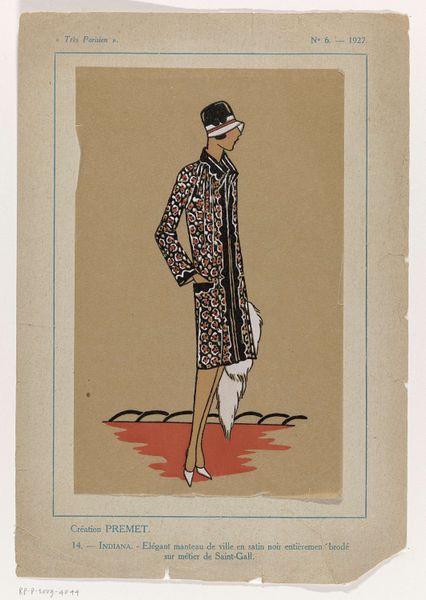
painting, watercolor
#
portrait
#
art-deco
#
painting
#
figuration
#
watercolor
#
watercolour illustration
#
decorative-art
#
watercolor
Dimensions: height 275 mm, width 185 mm, thickness 007 mm
Copyright: Rijks Museum: Open Domain
Editor: This is "The Fashion Magazine as Temptress" by G-P. Joumard, a watercolor from 1925. It feels like a very specific moment in time, capturing the style and perhaps even the anxieties of the era. What stands out to you when you look at this work? Curator: I see a fascinating encapsulation of 1920s feminine ideals and the emerging power of consumer culture. Joumard, through the lens of "Très Parisien," presents fashion not just as clothing but as a form of cultural currency, perhaps even a societal expectation, loaded with class implications. Note the "temptress" alluded to in the title – is this fashion liberating or is it a new form of constraint? Is she empowered by it, or defined by it? Editor: That's interesting. The title suggests a level of almost dangerous allure. Is that related to the rise of consumerism and its influence on women? Curator: Absolutely. The 1920s saw an explosion of consumerism, particularly aimed at women. Magazines like this one created an aspirational lifestyle, linking identity and belonging to specific fashion choices. Consider the phrase "La Mode, Le Chic, L’Élégance" displayed prominently. This is an era that increasingly defined femininity through visual codes and the accumulation of commodities. What effect do you think that had? Editor: I guess it placed immense pressure on women to conform to these idealized images and maybe disguised economic divides and societal disparities? Curator: Precisely. And in what ways do you think these codes reflected the socio-economic structure, what might they obscure, or exclude? Editor: The image does appear to depict a certain segment of society, not the diversity of the population, but… an aspirational, yet narrow segment, perhaps. This image and others of the time have significant impact and meaning, after all! I hadn't fully considered it that way. Curator: Indeed! Recognizing these patterns enables us to critically examine how media continues to shape perceptions and aspirations of women today. We are able to contextualize, question, and, in a sense, actively write our own narratives.
Comments
rijksmuseum about 2 years ago
⋮
The first fashion magazines were sold only by subscription. They have nondescript covers, with neither text nor image. This changed at the end of the 19th century when the publications came to be displayed in stands and shops. Publishers went to great lengths to entice potential buyers by means of attractive covers.
Join the conversation
Join millions of artists and users on Artera today and experience the ultimate creative platform.
